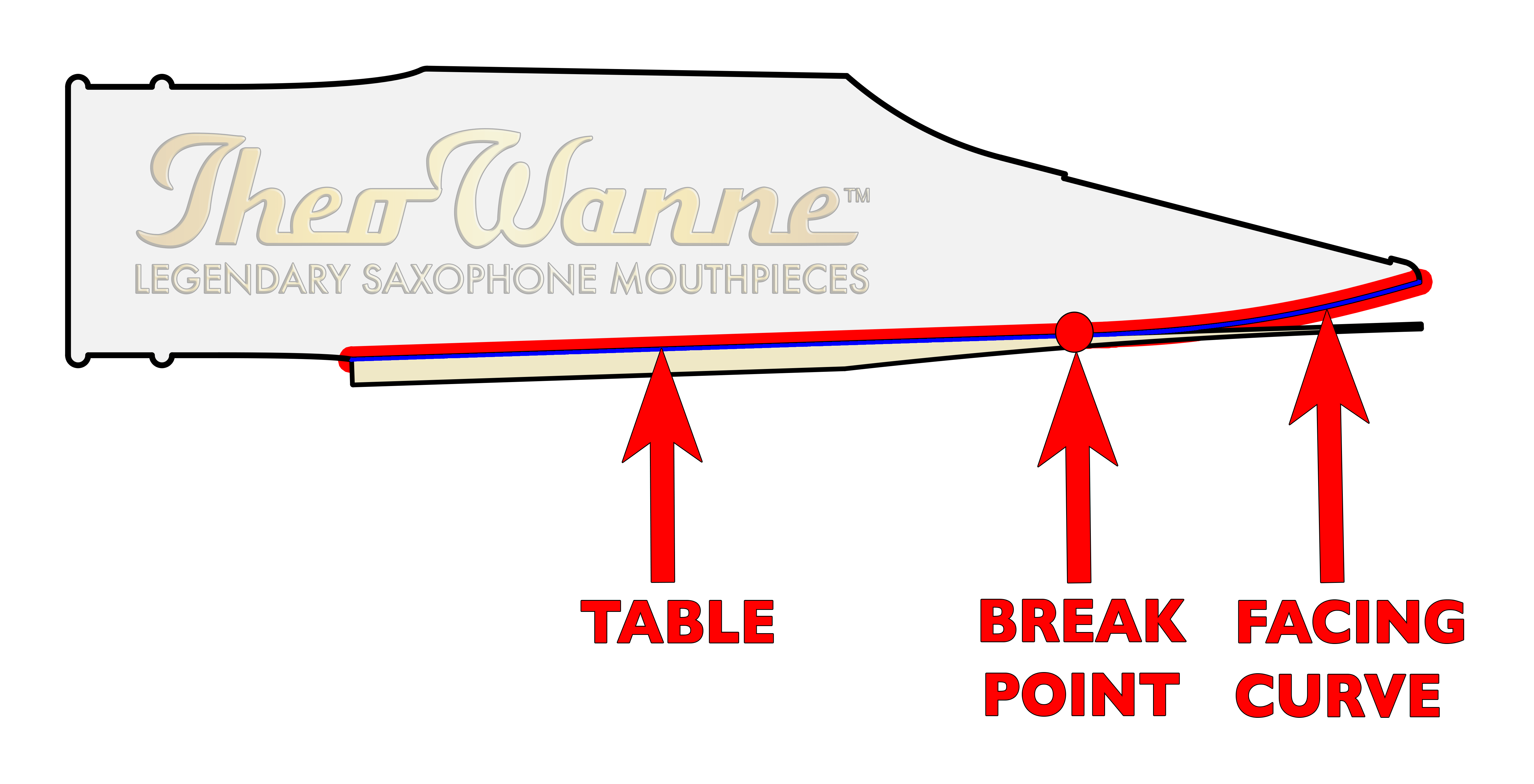

The second version of ‘SLANT SIGNATURE’ mouthpiece had a squarer shank, and had the tip size on the side of the mouthpiece. The ligatures had a thinner screw and a cross-hatch pattern.ġ955+ FLORIDA TONE EDGE ‘SLANT SIGNATURE’ MOUTHPIECES – TIP SIZE ON THE SIDE: By the end of the double band model run though, Otto Link started putting a lot more roll-over to their baffles, creating a much brighter sound. The first versions had a very shallow roll-over baffle (like the NY Otto Links). Some of the musicians that used the Otto Link TONE MASTER included:
#Tenor sax mouthpiece facing chart serial#
The first models had four smaller digits for a serial number.The later models had three larger digits: The top of the thumb screw now read, OTTO LINK. The reed contact plates were much thinner, allowing the reed to vibrate more freely. The ligatures truly improved at this point.
#Tenor sax mouthpiece facing chart serial numbers#
The serial numbers were on the side and the tip openings were stamped on the table. The TONE MASTER models had silver under gold plating. However, these mouthpieces still retained the very long and deep facing, which curtailed their responsiveness. They did, on rare occasions, make larger tip openings, such as a 7 or 8. They had very long and deep facings (like the older models), playing better with small tip openings. These mouthpieces were made in New York and had a bit more projection then the older models. Otto Link started putting a ridge on top of their metal mouthpieces to make it easier to center the ligature. Here are some Otto Link Ads from this period showing their product line-up:

They also sported an attractive machined shank, matching the look of their metal mouthpieces. They had Otto Link written at an angle across the back of the mouthpiece with a pretty chain link band going around the front portion of the body. The serial numbers and tip openings were marked on the table. Interestingly, they tended to play best with small tip openings. They had the largest chamber in the history of rubber Otto Links, and the lowest baffle. This is because back then hard rubber was so much less expensive than brass. They had “EBURNATED BAR” written on the top/body of the mouthpiece and were a budget line for Otto Link, like a student model. In 1936 the first hard rubber mouthpiece by Otto Link started production. Here are some ads from this period showing the four star model: Unique facings of this mouthpiece include one designed for Coleman Hawkins which said HAWKINS SPECIAL on the side and FACING NO H S on the table. Both Coleman Hawkins and Ben Webster switched to this model. Both of these mouthpieces were made in New York as marked on the shanks. Internally it is almost identical to the Master Link Model.īoth the MASTER LINK and the FOUR**** MODEL did not have a ligature ridge on top of the mouthpiece like all Otto Links to follow. This mouthpiece was named after the four stars of the saxophone world at the time: Charles Strickfaden, Henry Wade, Pat Davis, and Ross Gorman. The next model was the FOUR**** MODEL mouthpiece. In 1939 Coleman Hawkins fame helped launch the Selmer Saxophone brand with his fame and hit recording of ‘Body and Soul’. At this time, Kohlert, Connetable and Meyer mouthpieces were made from this same blank.Ĭoleman Hawkins played on this mouthpiece as well as on the next model, the Four Star Model. Hence, they had a very warm, dark, sound.Ī version of this mouthpiece was made for Coleman Hawkins and was named the HAWKINS SPECIAL. These mouthpieces have a very low baffle, a huge chamber and typically a very small tip opening (usually a 3 or 4) with a long, deep facing. It had cut out ridges beside/under the table, allowing the ligature to slide on. , Later models replaced the slide on ligature came with the same band ligature as the FOUR**** MODELS (see below).

The first mouthpiece Otto Link made in the early 1930s, probably 1931, was the MASTER LINK.



 0 kommentar(er)
0 kommentar(er)
